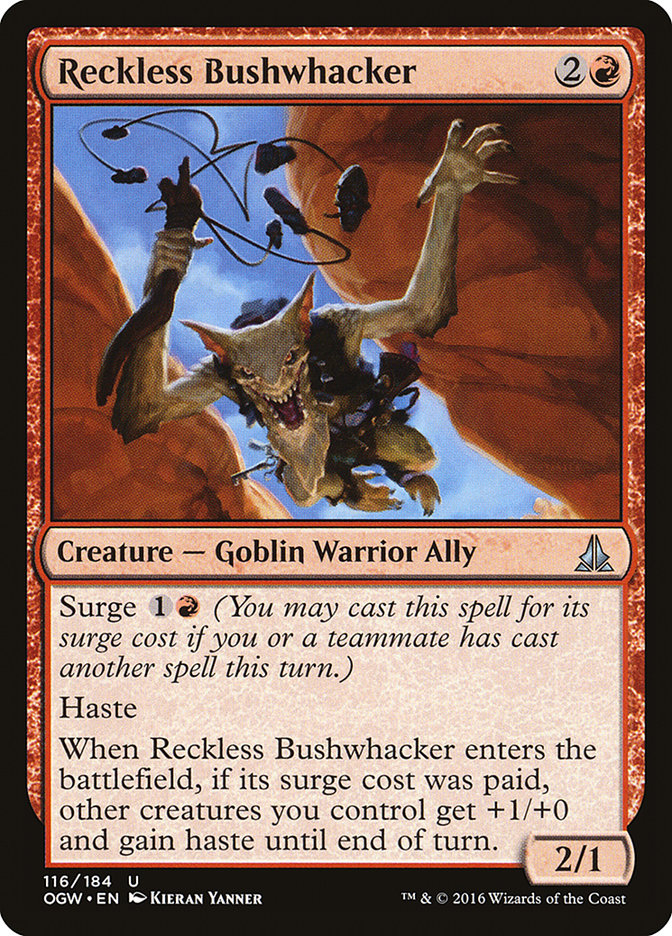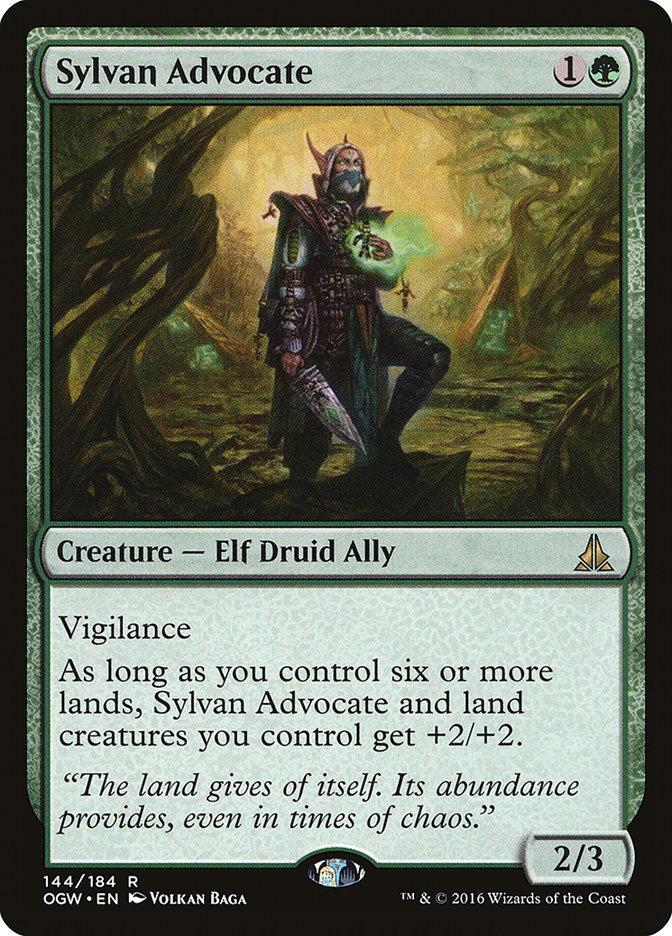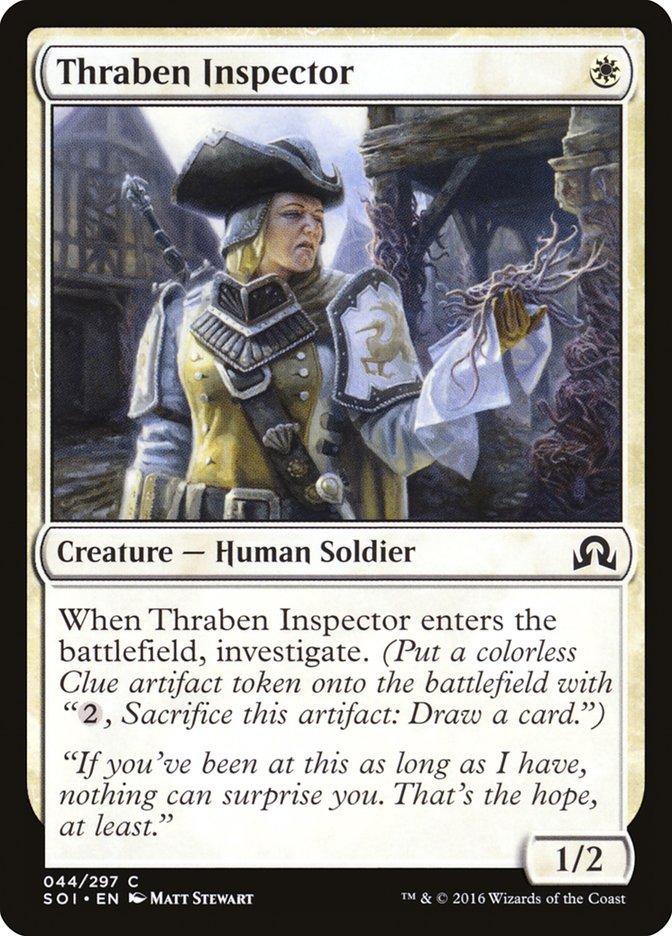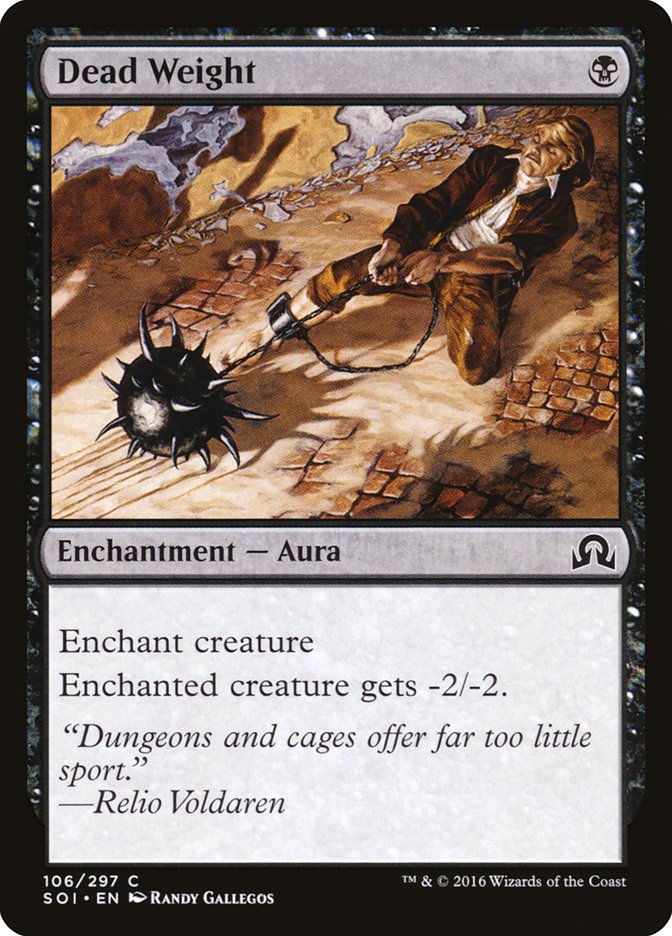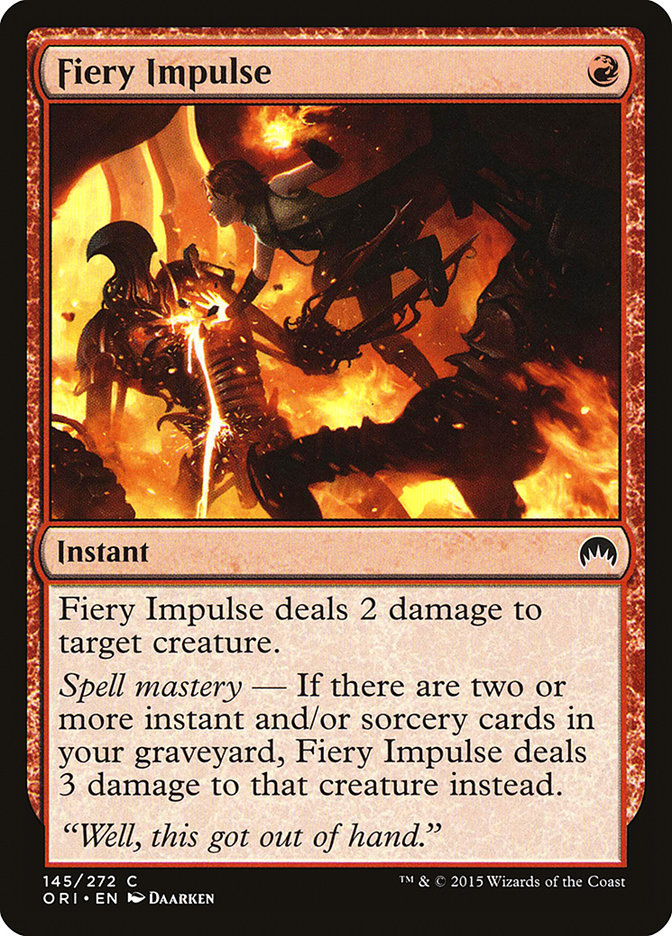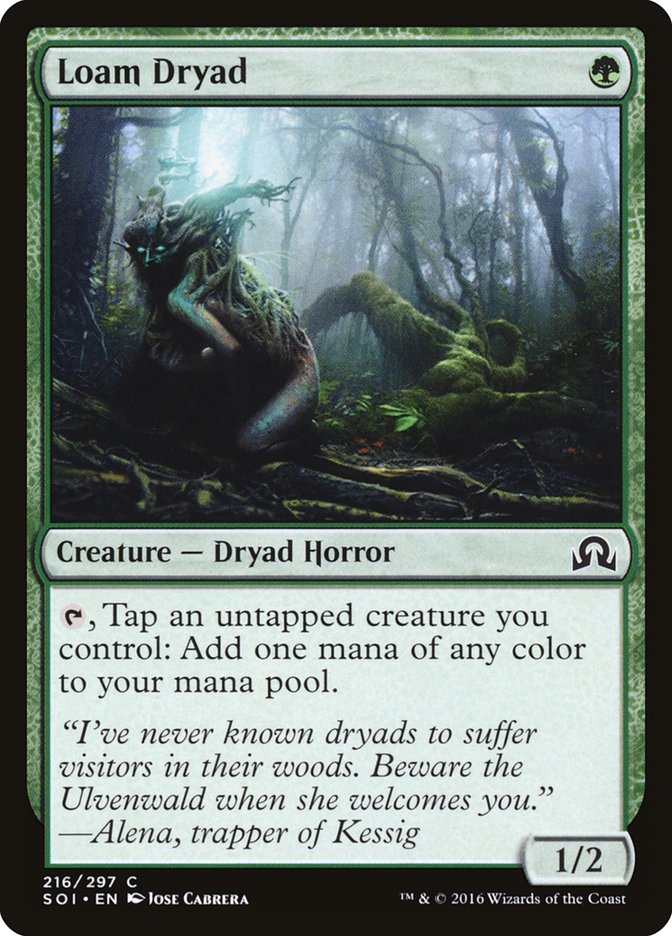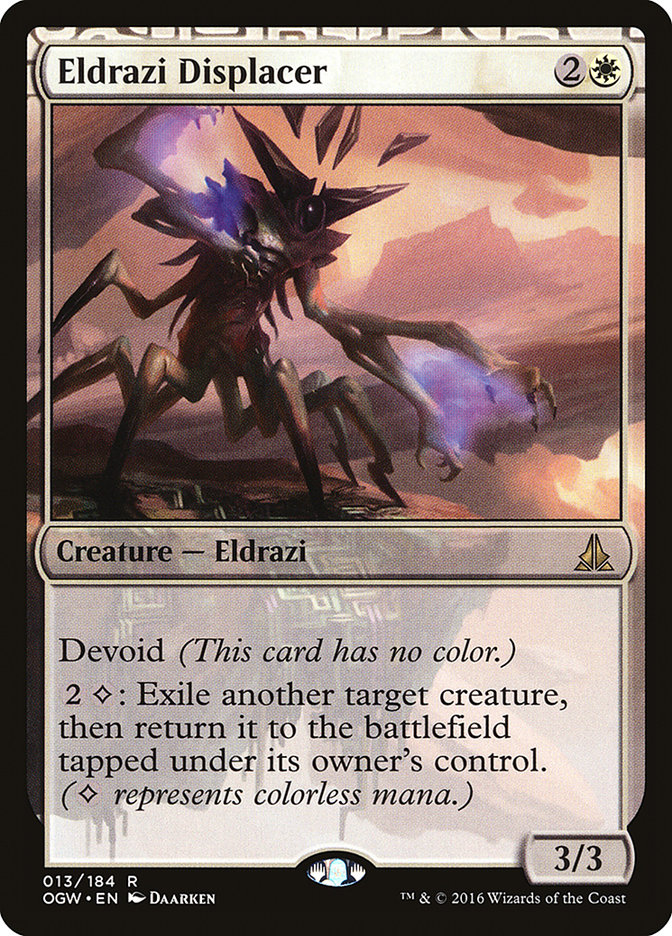Humans was the obvious aggro deck for Standard once Shadows over Innistrad was released, and unsurprisingly it was quite popular and quite successful in the early weeks of the format. But also unsurprisingly, its standing in the metagame diminished with time as new, more powerful decks emerged, were tuned, and adapted to the threat of this year’s aggro deck.
Humans was relegated to its expected role as the fun police of the format. If you tried to durdle too much and go over the top of the other midrange decks, Dragon Hunter and friends were there to punish you with blisteringly fast draws. But if you respected the Humans deck, it was eminently beatable. Humans was always around but never particularly prominent.
Then Tom Ross went and did Tom Ross things, winning back-to-back Standard Opens with his build of W/R Humans, splashing solely for Reckless Bushwhacker and Needle Spires out of the sideboard.
Creatures (31)
- 4 Knight of the White Orchid
- 4 Dragon Hunter
- 3 Kytheon, Hero of Akros
- 3 Anointer of Champions
- 3 Expedition Envoy
- 4 Thraben Inspector
- 4 Thalia's Lieutenant
- 2 Hanweir Militia Captain
- 4 Town Gossipmonger
Lands (18)
Spells (11)

The general build of the deck had been around for a couple weeks, and it’s certainly true that Tom’s skill with aggressive decks played a substantial role in his success over the past two weeks, but nonetheless, Humans has re-emerged as a deck to beat.
After Tom’s first win in Atlanta, it was much easier to attribute the success of the deck to the skill of the pilot. Tom was the only player piloting W/R Humans to make Day 2 and other variants of the deck were similarly scarce. But in Orlando, W/R Humans was the third most-popular deck on the second day, comprising over ten percent of the field. The deck continued to perform well against the other top decks in the room, putting two players into the Top 8 while a third, Lucas Kiefer, made Top 8 with his Humans list that eschewed the Reckless Bushwhackers while still keeping three copies of Needle Spires. Altogether, Humans was the most successful deck in the tournament a week after being a near-afterthought.
So what happened? It’s clear that players stopped respecting the power and speed of Humans, even after Tom’s first victory, and the metagame was soundly exploited as midrange decks focused more on going over the top of each other rather than keeping pace with hyper-aggression. Most players were leaning heavily on sweepers to catch them up from behind, whether Languish, Planar Outburst, or Tragic Arrogance; the prevailing opinion was that if you are able to stay alive long enough to cast one, Humans is not resilient enough to recover.
Suffice it to say that opinion is changing. Reckless Bushwhacker, Needle Spires, and cards like Gideon, Ally of Zendikar allow the Humans deck to quickly rebuild from a sweeper or even develop battlefields that are resilient to them. And by sacrificing the early-game and leaning on the sweepers to dominate, many pilots were caught in a situation where their sweeper was not enough to get them back into the game, or even if it was, it could not gain enough traction to turn the corner. Given enough time, the low land count of the Humans deck allows them to gain enough virtual card advantage and go wide to deal the final points, or they can simply go over the top with a Gryff’s Boon or two.
Where we need to fight Humans is in the first two turns of the game and not allowing them to create a substantial early advantage. If you can keep pace with them on those early turns, then their relatively low power level becomes a liability because your life total will be high enough that you can afford to get aggressive, especially with vigilance creatures like Sylvan Advocate and Archangel Avacyn.
Too many times last weekend, I watched a player on the draw against Humans confidently keep with their first play on turn 2, only to see their opponent cast three one-drops on the first two turns, remove their blocker on turn 3, and transform a Kytheon, Hero of Akros. A few desperation plays later and whatever gas was left in the tank for the Humans pilot would invariably be enough to end the game in short order. A piece of interaction on turn 1 would completely change the complexion of that game, and may be the only thing that would.
One-mana spells also allow you to double-spell earlier than normal, so even if you don’t have one in your opening hand or your draw dictates that you start on a land that enters the battlefield tapped, you can more reliably catch up from behind, even without a sweeper. To that end, I want to revisit the best one-mana spells you can look to to bolster your deck against W/R Humans.
Just like fire, you can fight tri-corner hats with other tri-corner hats and give your opponent a taste of their own
Thraben Inspector can come down and block their turn 1 play, bouncing off or even better trading for their play, and leaving behind a little bit of value so you can pull ahead later on. Thraben Inspector was a four-of in Steve Rubin’s Pro Tour-winning G/W Tokens list for this exact reason, and the decline in Humans led to the card being cut from more recent lists. Inspector is particularly good in G/W Tokens, since the various pump effects can turn a 1/2 body that at best trades into a 2/3 or larger that can stymie much of their offense. Playing a somewhat underpowered card will certainly make you worse in the mirror, but as Humans continues to rise in popularity, that trade-off only gets better.
We even saw the Inspector do good work last weekend in Orlando out of Brennan DeCandio’s U/W Aggro deck. Normally a deck hoping to attack with Rattlechains and the like would fold to the strong starts from Humans, but Inspector goes a long way toward ensuring that you can set up your offensive game plan without falling too far behind.
Dead Weight is another card I saw do good work on camera last weekend, this time in the hands of Ben Stark and his G/B Control deck. Like Inspector, Dead Weight can trade for their one-drop, but the removal spell can more readily trade up, killing a two-mana creature like Hanweir Militia Captain or Knight of the White Orchid. Even after a Thalia’s Lieutenant or Always Watching, Dead Weight will likely find a suitable target, so it will likely remain a live draw even late in games.
Unfortunately, Dead Weight is much less versatile in other matchups. Thraben Inspector gets to do its best Elvish Visionary impression regardless of what your opponent is doing, but Dead Weight can languish in your hand against bigger creatures and more controlling decks. That’s why we see only two copies in Ben’s list, although if you expect Humans to be even more popular, I think Dead Weight is a premier sideboard card and in that role can see play in even larger numbers.
Fiery Impulse plays the same role as Dead Weight as a one-mana removal spell to help you maintain parity with Humans in the early-game, but it comes with two significant advantages. First, it’s an instant, meaning you can still trade for their one-drop when you play first, allowing you to most efficiently use your mana. Secondly, it can potentially deal three damage, a key upgrade that keeps Impulse from becoming dead later in games. Impulse can potentially answer bigger creatures like Sylvan Advocate, Reflector Mage, and Lambholt Pacifist, so it will be effective against the rest of the metagame and you can play three or four copies in the maindeck without fear.
The red instant also has a natural home with Jace, Vryn’s Prodigy and Kalitas, Traitor of Ghet in Grixis Control, a deck that rose to prominence after the Pro Tour but has since faded to the fringe. The bevy of cheap removal at your disposal in those colors and the strong threats to turn the corner quickly make it an ideal deck with which to combat Humans, so I expect to see more of it in the near-future. Impulse can also fill a role in Naya Midrange variants and Ramp strategies, so while red is likely the weakest color in the format, Fiery Impulse still has several potential homes right now in Standard.
Loam Dryad is a placeholder here for Cryptolith Rite decks, since you never find one without the other. We saw Danny Jessup revive Four–Color Rite in Orlando, since it has a good matchup against G/W Tokens. Loam Dryad also does some good work against Humans for a couple of reasons.
First, it’s an early play that can simply trade for their one-drop like Thraben Inspector. Second, it can be used as a mana creature to keep up with Humans in early-game development. Third, decks that use Loam Dryad and Cryptolith Rite naturally aim to develop a significant battlefield presence, which you can use to stymie their early aggression before setting up an overpowering play like the Brood Monitor combo or Dragonlord Atarka.
However, Four-Color Rite has typically struggled with Humans despite these advantages. The strained and painful manabase and lack of lifegain severely hamper the deck against early aggression. As such, I would not be surprised to see a resurgence of G/B Aristocrats as the Cryptolith Rite deck of choice. The G/B deck has access to another one-drop in Blisterpod, lifegain from Zulaport Cutthroat, and Nantuko Husk to dominate combat without expending tons of mana like you would with Eldrazi Displacer. You also have a smoother, less painful manabase and access to premium black removal spells to deal with problematic creatures that may break through a clogged battlefield.
Zulaport Cutthroat is particularly important because it allows you to win the game without committing a significant number of resources to attacking. You can focus on developing your battlefield and playing defense, eventually either going over the top with Ormendahl, Profane Prince; finding enough copies of Zulaport Cutthroat and a Nantuko Husk to ping them to death; or at the very least turning Nantuko Husk into a lethal attacker and forcing them to chump block every turn.
Humans and other hyper-aggressive decks don’t give you the time to recover from a poor gameplan, so beating them is all in your preparation. You have to come knowing that you are well-equipped for the matchup and mulligan aggressively for strong opening hands.
Do not make the same mistake that hundreds of players made in Orlando. Experienced Humans pilots are prepared to play through sweepers and will still punish you should you fail to draw one. The onus is on you to come equipped with a plan that they are not prepared for.
Right now Humans players are confident that most of their opponents will cede the early turns to them and will exploit the fact that they are always playing from ahead. Do not afford them such a luxury.
Start playing from turn 1 and their 2/1s and 2/2s will be much less threatening with the life total buffer you will now have. Humans cannot compete going long with Archangel Avacyn; Sylvan Advocate; Tireless Tracker; Kalitas, Traitor of Ghet; or the other myriad powerful midrange threats in Standard.
Rather than relying on yet another powerful four-mana spell, leverage the power of those you already have and supplement those cards with a more robust early-game. Even seeing Tom Ross across the table won’t be so scary.
Unless he’s wearing his leather jacket. Then you might as well sign the match slip and get some food.


